Gardening doesn’t have to be expensive always! If you’re a bit broke but still looking to set up a cheap, affordable garden, follow these ideas.
Gardening can sometimes be quite heavy on the pockets! So, if you love growing plants but are not well financially, don’t sweat it! Here’s how to save money without compromising on leafy friends. Check out these cheap and affordable garden and backyard ideas if you’re on a budget.
Cheap Garden Ideas for the Broke & Penniless
1. DIY Your Own Pots

Broken tea cups, old colanders, cookie tins, bread pans, spare buckets, and cans—anything can be a holding medium for plants. Succulents, microgreens, and small plants grow well in even tiny waste containers from your home, as long as they are filled with the right growing medium.
For larger plants, waste buckets, sacks, and cans can make perfect replacements, with sufficient holes drilled in to provide the perfect draining conditions. Our post offers many free container ideas.
2. Create Your Own Potting Mix
Making your own DIY potting soil can drastically cut your gardening budget! Perfect for container gardening, rooting cuttings, or starting seeds, a good, lightweight, well-draining potting mix is essential for plant growth.
Coconut husk, coir, sphagnum peat moss, perlite, organic compost, wood chips, pine needles, limestone, brick pieces, leaf mold, and sand are some common ingredients. Just remember, you’ll have to get your hands dirty! Check out our guide to making your own potting soil for more.
3. DIY Mulch
According to this expert report, a well-mulched garden can almost double your yield! Mulching is adding a thin layer of suitable material to the soil that helps suppress weeds, limit runoffs, and nourish and insulate it. And it is super easy and effective to make at home with things you find around you.
Dried-out branches, twigs, leaves, banana peels, wood chips, hay, straw, and husk are all useful materials for mulch. And if your garden is strewn with pine needles, here’s how you can make mulch out of it.
4. Homemade Fertilizers
Plants need nutrition, and very often, everything you need is right there in your kitchen! These natural, homemade recipes are typically gentler, chemical-free, and free of cost, unlike pricier, store-bought fertilizers.
Plant food must contain a healthy dose of nitrogen, potassium, and phosphorous, along with other micronutrients. Coffee grounds, egg shells, rice water, organic food waste, compost, grass clippings, Epsom salt, and even homemade bone meal can give your plants all the nutrition they need.
However, to know exactly what they need, make sure to test your soil and understand your plants’ growth habits. Check out these homemade fertilizer recipes using kitchen scraps.
5. Natural Pesticides
Plants and pests are a toxic but recurring duo. You need something that will effectively deter pests without harming your plants. Even if you have the money, we recommend DIY, natural, and homemade insecticides and pesticides.
Store-bought ones are not only expensive, but they may also contain ingredients that are too severe on the plants and the soil and could harm useful pollinators and tiny creatures as well.
Neem oil, soapy water, manual dusting and wiping, and planting pest-repelling companion plants are all cost-effective tricks that will protect your plants and your budget. Check out these natural pesticides for your garden.
6. Use Space Efficiently
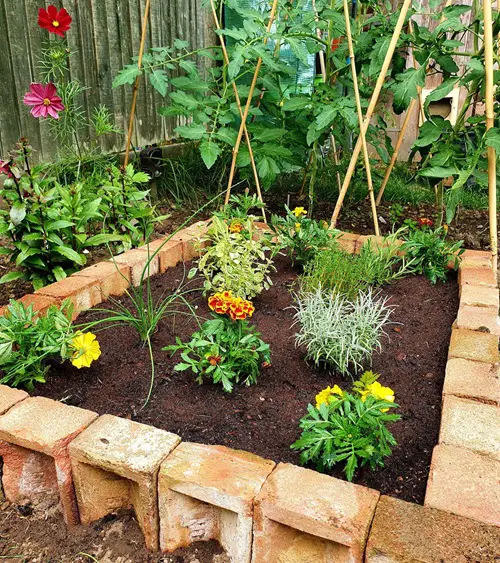
Instead of directly growing plants in the ground, try arranging pots at regular intervals to fill up the entire area efficiently and save on resources. This will not only directly cut down your costs, but in the long run, you will not use your tools and supplements as much.
Intercropping, succession planting, companion planting, and raised beds are all useful methods for the space-conscious gardener.
7. Collect Rainwater
Next on our list of budget-friendly gardening hacks for the broke is water. What? Isn’t water free? No, it is very pricy as climate change becomes more real, but rainwater is a free and rich alternative! With all its minerals and nitrogen content, rainwater has hard-to-replicate goodness, and storing it is the best way to access this nourishing natural resource.
You can either harvest rainwater like a pro or simply leave large containers outdoors during rains to directly collect and use. But don’t leave it open and stagnant for too long, as that may invite pests and bacteria.
8. Discarded PVC for Gardening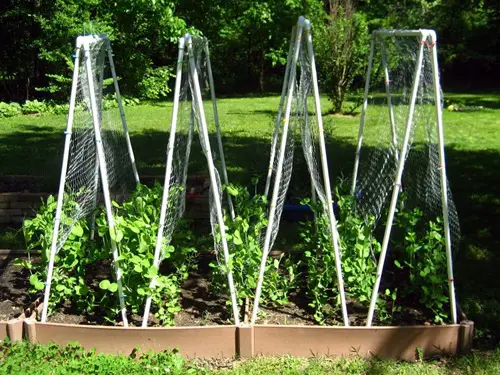
If you have spare PVC pipes, don’t toss them out! These are a dream for upcycled gardens, as they can be repurposed into trellises, raised beds, elevated planters, vertical towers for hydroponics, and much more!
Check out this guide to making a PVC garden, and you’ll find your favorite use for these sturdy materials.
9. Compost Pile
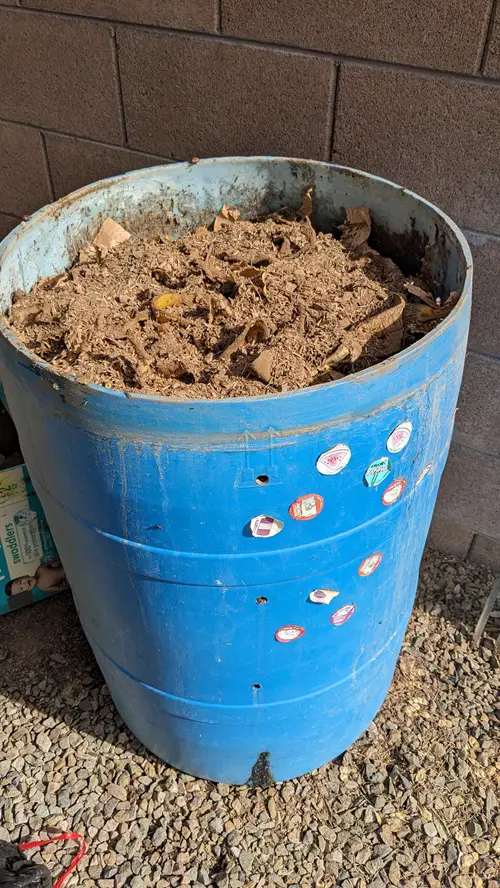
Use a barrel solely for the purposes of collecting materials that can make compost. This bin will be a storage container of organic material such as leaves, vegetable peels, and others, along with worms to start vermicomposting and use this nutrient-rich material to feed your plants.
10. Save Seeds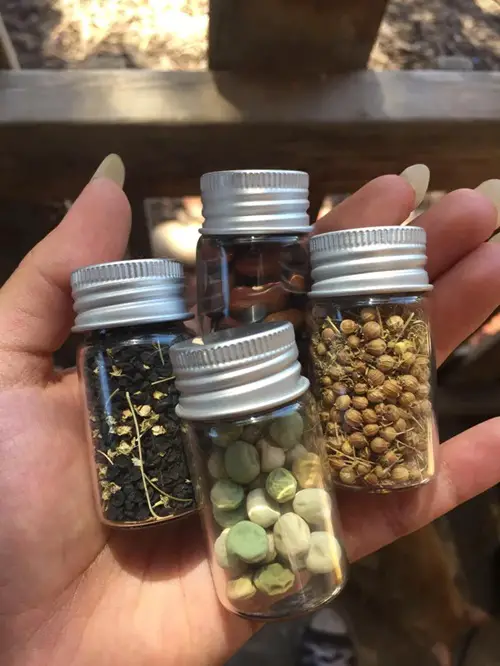
Seeds are often overlooked until one wants to grow a plant. But when you come across a delicious fruit or vegetable or find heirloom seeds for your favorite herbs and flowers, save! Make sure you pack the seeds in airtight Ziploc bags and store them away because these are precious!
And when the timing is right, start your seeds using a repurposed container suggested above, and enjoy the process of growing these exclusive plants!
11. Start Germination Indoors

Since we’re on the topic of seeds, germinating them indoors can be a much more reliable way to ensure higher survival rates. You can pay much closer attention as well as provide specific needs. Once the seeds sprout and shoots appear, transplant them to their final location.
More successful germination means more plants and lesser seed wastage!
12. Vocal for Local
Avoid rare, imported species that don’t grow naturally and easily in your geography because they are both wasteful, heavy on resources, and can even harm endemic vegetation. Use native and tolerant species that adapt well to the natural environment, are hardy, and grow fuss-free.
With indigenous vegetation, your garden will suddenly morph into a magical biodiversity haven filled with beautiful pollinators and beneficial creatures. Local varieties also resist pests better, which in turn cuts down on pesticide and resource costs.
13. Spend Time at Your Local Nursery
Become a regular at your local nursery and garden center to learn first-hand what to grow, when, and other useful insights. Many plant places give away plants to their volunteers. You can also opt to salvage dying and unpopular plants, which you’ll likely get at a discount.
And with the knowledge you’ve gained, you could revive them back to the pink of their health.
14. Off Season Sale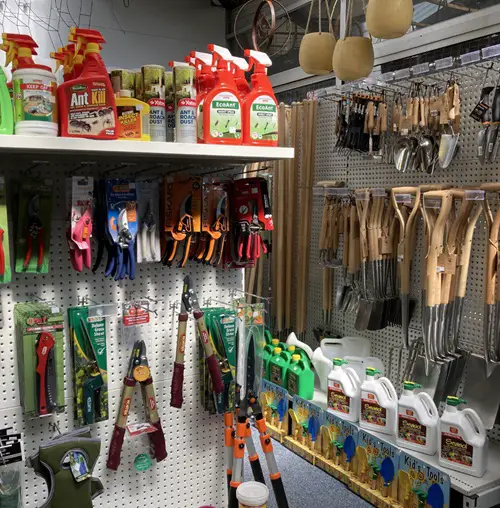
Another important gardening idea for when you’re broke is to pay attention to timing and season! Gardening has its peaks and dips according to the time of the year. People tend to buy more gardening equipment just before the growing season (which varies from plant to plant).
So, choose a plant of your liking and buy everything way before its growing phase, to get the best deal at a steal!
15. Grow Self-Seeding Flowers

Now, if you’re new to gardening or just don’t have the time or resources to plant, replant, pot, repot, and so on, pick self-seeding varieties. These plants may lose their blooms during dormancy, but they will drop seeds before bidding adieu!
And those will grow into new blooms next season without you having to do much, really. Here are some self-seeding flowers you could explore for your garden.
16. Choose the Right Plant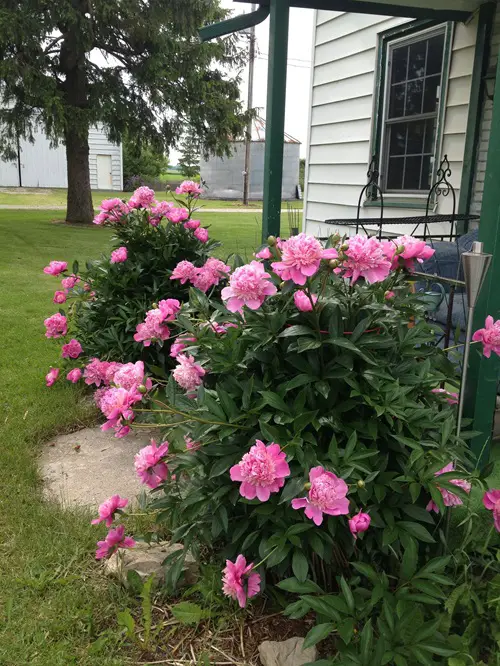
Spending money on annuals or biennials is resource and time-intensive. Annuals finish their life cycle and perish within a year and biennials within two growing seasons. Hence, perennials are the way to go since they live for over two years, some up to several decades!
We have compiled a list of long-lasting perennials that keep on blooming. Check it out, and remember, it’s a long term investment that cuts down constant expenditure.
17. Save Bulbs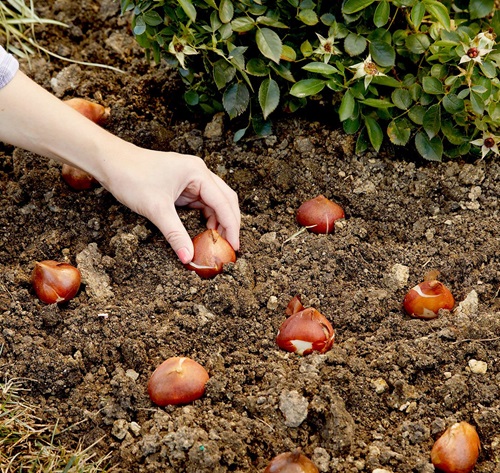
Our next money-saving gardening idea for when you’re broke is just like the seeds one above, except it’s with bulbs this time. There is a whole range of flowering plants that can be grown from bulbs, including but not limited to tulips, hyacinths, crocus, lilies, and daffodils. Come frost, remember to uproot and save them from the cold.
Keep them clean and plant them again at the right time to secure unending sessions of blooms.
18. DIY Seed Tape

A seed tape is a gardening tool that allows you to plant multiple seeds in one go. These seeds are perfectly placed for the best chance of survival and growth. But seed tape can be quite expensive. Instead, use a roll of tissue paper and a bunch of seeds to make your free DIY seed tape at home.
This cheap gardening hack is also easy to do. Align your seeds at regular spaces on the tissue and moisten them with a spray bottle to get the seeds to stick. Fold another layer of tissue over and mist it again, and voila, you are done!
20. Sell Excess Produce
Selling your previous produce can be a side hustle that can support your ever-growing passion for gardening. For example, if you have abundant roses or herbs, simply pot some extra ones and sell them at a local market or just to your friends.
Especially with rare, native, and heirloom plants, this is a good way to keep these beneficial plants growing and expanding.
21. Community Garden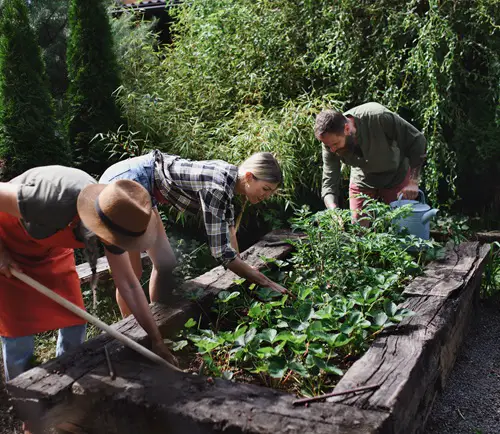
Now, all of us have been broke, strapped for cash, or with very little space in our lives. If you know other gardening enthusiasts around you who are in the same boat, join up and start a community garden.
You get to share equipment, costs, efforts, and space and really create something magical. And you know what they say—friends who garden together reap the harvest together! Check out this guide by Minessota University on how to start one.


